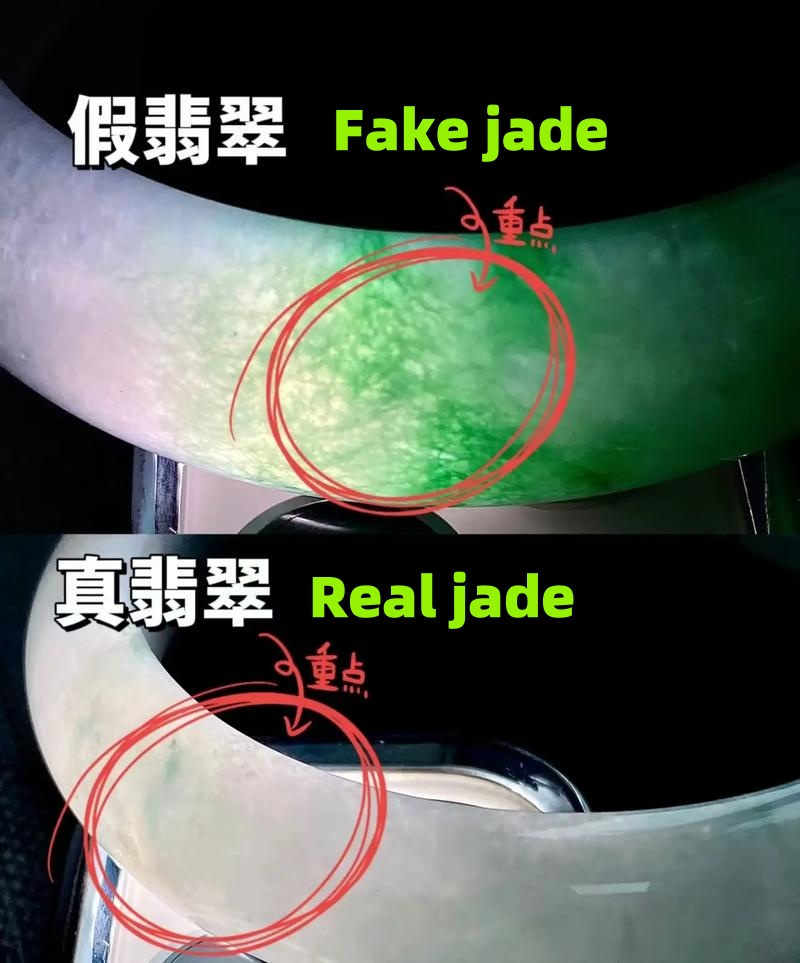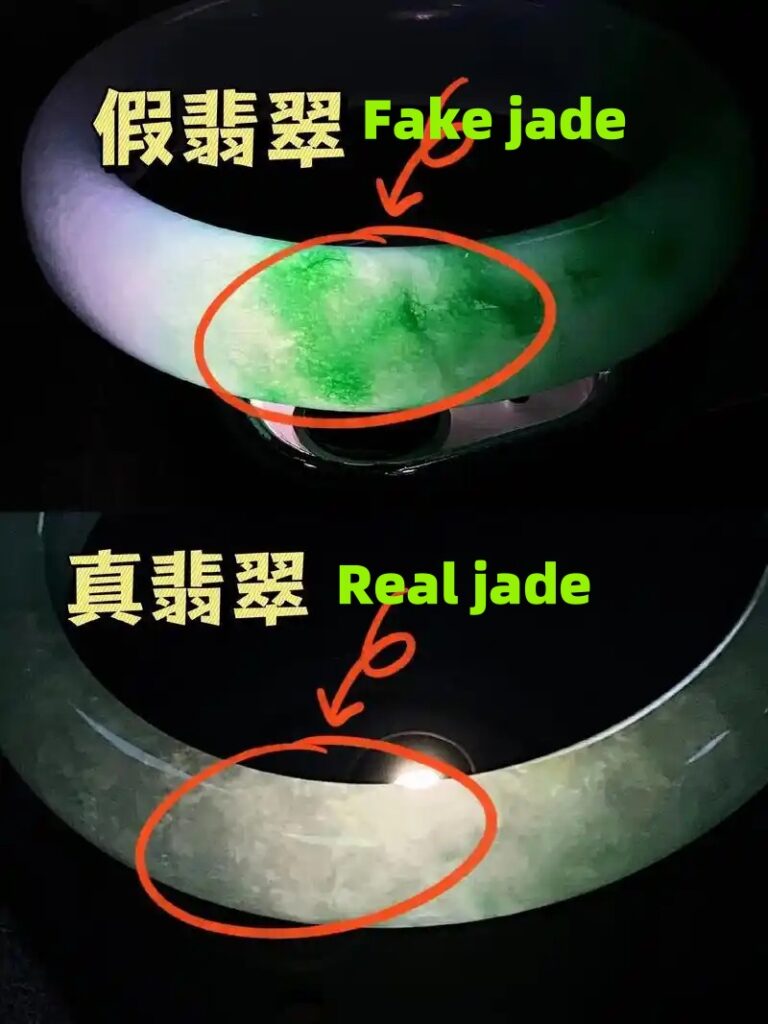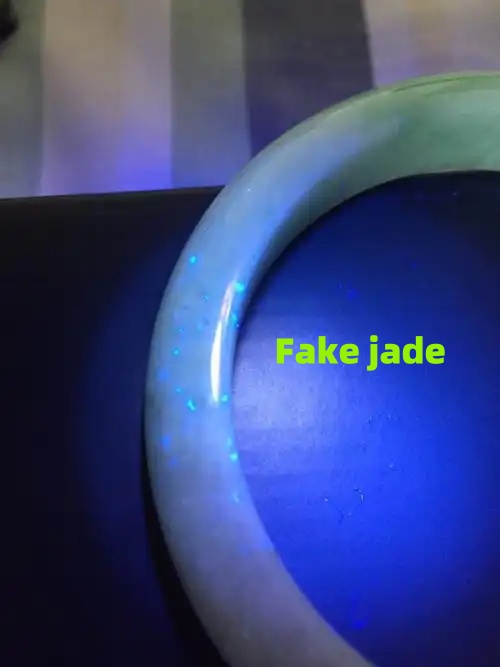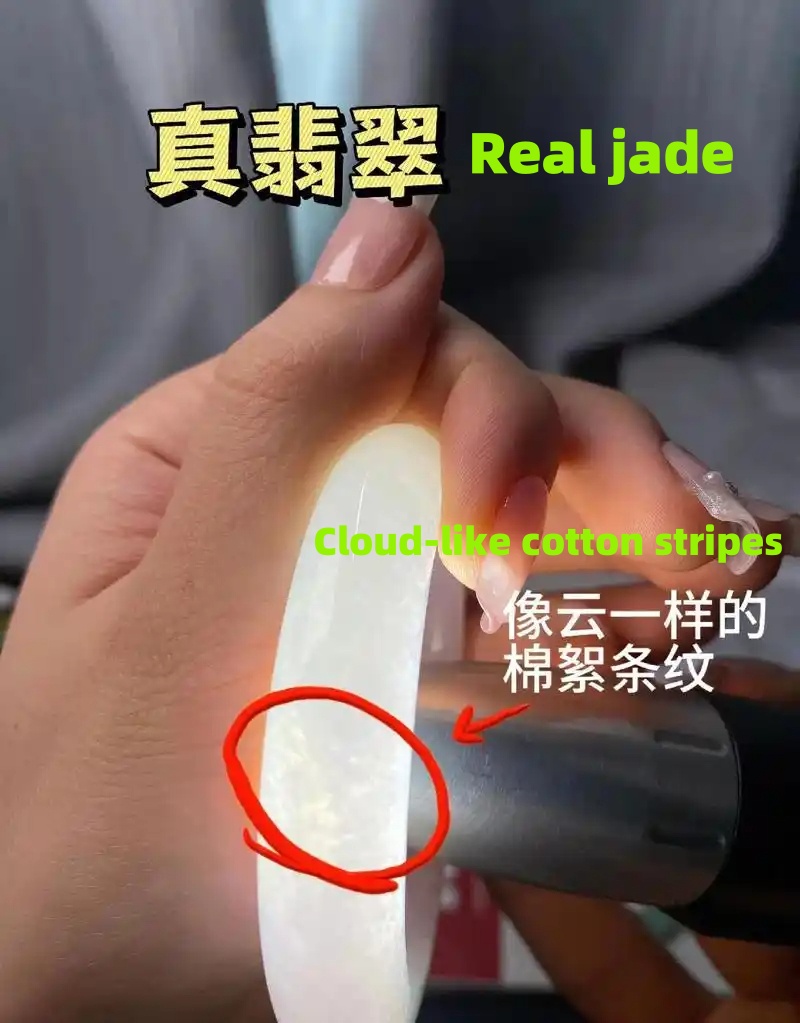Table of Contents

1. Introduction: Why Learning How to Identify Jadeite Matters
Jadeite has long been treasured as one of the most beautiful and valuable gemstones in the world, admired for its rich colors, smooth texture, and cultural significance. From the imperial courts of ancient China to modern fine jewelry markets, jadeite continues to captivate collectors and enthusiasts alike. However, its popularity has also made it one of the most imitated gemstones on the market. Countless treated stones, imitations, and synthetic versions circulate in jewelry stores and online marketplaces, often sold at high prices to unsuspecting buyers.
This is why learning how to identify jadeite is an essential skill for anyone who loves fine gemstones. Whether you are a collector, a jeweler, or a casual buyer looking for a special piece, understanding the characteristics of genuine jadeite can help you avoid costly mistakes. Knowing how to identify jadeite not only protects your investment but also allows you to appreciate the craftsmanship, rarity, and natural beauty of authentic stones.
With today’s advanced treatments such as polymer impregnation, acid bleaching, and dyeing, spotting fake or treated jadeite is more challenging than ever. A quick glance is often not enough — you need a combination of visual examination, physical tests, and, in some cases, laboratory analysis. This guide will walk you through the fundamentals of how to identify jadeite, from recognizing its natural patterns to spotting signs of artificial enhancement, ensuring you can make confident and informed buying decisions.
2. What is Jadeite? Understanding This Precious Gemstone
Before learning how to identify jadeite, it’s important to understand exactly what jadeite is and why it is so highly valued. Jadeite is one of the two minerals that are collectively known as “jade” — the other being nephrite. While both are admired for their beauty, jadeite is rarer, harder, and often more vibrant in color, making it the more valuable of the two.
Geologically, jadeite is a sodium and aluminum-rich pyroxene mineral that forms under high-pressure, low-temperature conditions, typically in subduction zones where oceanic crust is forced beneath continental plates. Its crystal structure and interlocking grain texture give it exceptional toughness, making it resistant to chipping and breaking — a quality that has made it a preferred material for carving intricate jewelry, ornaments, and ceremonial objects.
Jadeite occurs in a wide range of colors, from deep emerald green (often referred to as “imperial jade”) to lavender, red, yellow, and even white. The most prized jadeite is semi-transparent with a vibrant, uniform color and a smooth, glass-like luster. However, not all jadeite meets these high standards. Lower-quality stones may have cloudy areas, uneven colors, or visible fractures — characteristics that are important to recognize when learning how to identify jadeite.
Another key aspect of jadeite’s value lies in its cultural significance. In Chinese tradition, jadeite is more than just a gemstone — it symbolizes purity, protection, and prosperity. This cultural demand, combined with its rarity, has made it a target for counterfeiters and those selling treated stones as “natural.” By understanding the mineral’s origins, physical properties, and value factors, you are taking the first step in mastering how to identify jadeite accurately.

3. Types of Jadeite: A, B, C, and D Grade Explained
When learning how to identify jadeite, one of the first things you need to understand is the industry’s grading terminology. In the jade market, especially in Asia, jadeite is commonly classified into four main categories: A, B, C, and D grade. These are not “quality grades” in the sense of beauty or rarity; instead, they indicate the level of treatment the stone has undergone. Knowing these categories will help you recognize whether a stone is truly natural or has been artificially enhanced.
- A Grade Jadeite – This refers to completely natural jadeite that has only been carved, polished, and sometimes waxed. It has not undergone any chemical treatments, dyeing, or structural alterations. A-grade jadeite is the most valuable because it retains its natural crystal structure, color, and durability. When considering how to identify jadeite, A-grade stones often display natural variations in color and texture, as well as a soft, waxy luster.
- B Grade Jadeite – This jadeite has been chemically bleached in acid to remove impurities and then impregnated with a colorless polymer or resin to improve translucency and stability. While it may look beautiful initially, the treatment can weaken the stone’s structure over time. B-grade jadeite usually has an overly glassy or plastic-like shine, which is a visual clue when practicing how to identify jadeite.
- C Grade Jadeite – This refers to jadeite that has been artificially dyed to enhance or change its color. C-grade stones may have unnaturally bright hues, sometimes with concentrated color spots or streaks visible under magnification. Learning how to identify jadeite often involves spotting these unnatural color patterns.
- B + C Grade Jadeite – A combination of the above two treatments, where the stone is both bleached/impregnated and dyed. This is the least desirable form of jadeite and can be quite deceptive to buyers who don’t know how to identify jadeite properly.
- D Grade Jadeite – In reality, this is not jadeite at all but other materials (such as serpentine, quartz, or glass) passed off as jade. Identifying D-grade fakes is an essential skill in mastering how to identify jadeite.
By familiarizing yourself with these categories, you will be far better equipped to evaluate a piece of jadeite and protect yourself from purchasing treated or imitation stones at natural jadeite prices.
4. How to Identify Jadeite by Appearance
The most accessible way to start learning how to identify jadeite is through its visual characteristics. While some treatments and imitations can be very convincing, careful observation of color, luster, transparency, texture, and natural patterns can reveal important clues.
Color and Luster
Natural jadeite occurs in a wide range of colors, but the most valuable varieties — such as the vivid “imperial green” — have a rich, even tone that seems to glow from within. Other popular natural colors include lavender, yellow, red, and white. When you are learning how to identify jadeite, remember that authentic stones rarely have perfectly uniform color; instead, you may see gentle gradients or subtle variations.
The luster of genuine jadeite is typically described as waxy to vitreous (glass-like), with a soft and smooth glow rather than an overly shiny, reflective surface. In contrast, treated jadeite or imitations may appear overly glossy, similar to polished plastic or glass.
Transparency and Texture
Transparency is another important factor when learning how to identify jadeite. High-quality jadeite is often semi-transparent, allowing light to penetrate slightly and give the stone a glowing appearance. Lower-quality jadeite may be more opaque, with cloudy or milky areas.
Texture refers to the arrangement of jadeite’s interlocking crystal grains. The finest jadeite has a smooth, even texture with no visible graininess. Under magnification, you might see a tight, fibrous structure that contributes to its toughness. Coarse-grained jadeite, on the other hand, will appear more granular or speckled.
Common Natural Patterns
Natural jadeite often contains unique internal features that can help you identify it. These include:
- Veining or mottling: Soft streaks or cloud-like patches of color within the stone.
- Color zoning: Natural variations in color intensity, which may appear as patches, bands, or spots.
- “Root” or “moss” patterns: Organic-looking inclusions that resemble plant fibers or moss under magnification.
When you are practicing how to identify jadeite, it’s important to remember that these natural features add to the character of the stone. Perfectly flawless jadeite is extremely rare, and stones with no variation in pattern or tone may require closer inspection to rule out treatments or imitations.

5. Touch and Sound Tests for Jadeite
While visual inspection is important, the sense of touch and hearing can also provide valuable clues when learning how to identify jadeite. These traditional methods have been used by experienced jewelers and collectors for centuries, and when combined with other tests, they can help you distinguish genuine jadeite from treated or fake stones.
Temperature Test
One of the simplest tactile methods for how to identify jadeite is the temperature test. Authentic jadeite tends to feel cool to the touch when you first hold it, even in warm weather. This coolness is due to jadeite’s high thermal conductivity, which allows it to absorb heat slowly.
To perform this test, place the jadeite gently against your cheek or the back of your hand. Genuine jadeite will feel noticeably cooler than room temperature and will warm up slowly as it absorbs your body heat. In contrast, glass or plastic imitations tend to warm up quickly, losing that refreshing, cool sensation within seconds.
While this test is not foolproof, it can be a helpful first step when assessing how to identify jadeite, especially if you do not have professional tools at hand.
Sound Resonance Test
The sound resonance test, also known as the “ringing” test, is another traditional way to evaluate jadeite. To try this method, gently tap two pieces of jadeite together or use a small piece of genuine jadeite to tap the stone you’re testing.
High-quality, authentic jadeite produces a clear, crisp, and resonant “ding” sound, somewhat like fine porcelain. Lower-quality jadeite may produce a duller tone, and glass or plastic will often sound muted or “thuddy.”
Experienced collectors often rely on this method when practicing how to identify jadeite in markets or stores. However, be cautious — tapping too hard could damage the stone, especially if it has hidden cracks or is a treated piece like B-grade jadeite, which can be more fragile.
6. Using Light and Magnification
Light and magnification techniques are essential tools in the process of how to identify jadeite. They allow you to examine the stone’s internal features, surface details, and any signs of artificial treatment that may not be visible to the naked eye.
Torchlight Test
Using a small, focused LED flashlight or jeweler’s torch is a quick way to reveal a jadeite stone’s transparency, inclusions, and possible dye concentrations. When you shine light through genuine jadeite, you will typically see a soft, glowing translucence with evenly distributed light.
If the jadeite has been dyed (C grade), you might notice concentrated color patches or streaks, especially near fractures or grain boundaries. For B-grade jadeite, torchlight may reveal an overly “clear” or “empty” look caused by the removal of natural impurities during acid bleaching.
For anyone learning how to identify jadeite, torchlight inspection is a simple yet powerful way to detect treatments and evaluate quality before making a purchase.
Microscopic Observation
A jeweler’s loupe (10x magnification) or a gemological microscope is one of the most reliable tools for how to identify jadeite. Under magnification, natural jadeite often shows a dense, fibrous, interlocking crystal structure. You may also spot natural inclusions, such as tiny mineral grains or organic-looking “moss” patterns.
In contrast, treated jadeite can display several warning signs:
- Polymer-filled fractures that appear as smooth, shiny lines under light.
- Color concentrations that look unnatural or too intense.
- Air bubbles — a clear indication that the material might be glass rather than jadeite.
Microscopic examination is especially valuable for confirming suspicions raised during visual, touch, or sound tests. For anyone serious about mastering how to identify jadeite, learning to use magnification tools effectively is an indispensable skill.

7. Advanced Methods to Identify Jadeite
While visual inspection, touch, and simple light tests are useful, mastering how to identify jadeite requires the use of advanced gemological methods. These techniques are more accurate and can confirm suspicions raised during initial observations. They often require specialized equipment, which is typically available at gemological laboratories or professional jewelry workshops.
Specific Gravity Test
Specific gravity (SG) measures the density of a gemstone compared to water. Natural jadeite has a specific gravity ranging between 3.30 and 3.38. To perform this test, the stone is weighed in air and then weighed again while submerged in water. The weight difference is used to calculate its SG.
If a stone’s SG is significantly lower, it could indicate that the piece is made from a different mineral, such as serpentine or quartz, or that it has been heavily impregnated with resin, which lowers its density. For anyone serious about how to identify jadeite, SG testing is a reliable method to rule out obvious fakes.
Refractive Index Measurement
The refractive index (RI) measures how light bends as it passes through a gemstone. Natural jadeite has an RI of approximately 1.66 to 1.68. A refractometer is used to obtain this measurement.
If the RI reading is outside this range, the stone may be nephrite, glass, or another substitute. In B-grade jadeite, resin impregnation can slightly alter the RI, so comparing results with known natural specimens is important when practicing how to identify jadeite.
Spectroscopy Analysis
A spectroscope allows you to examine the absorption spectrum of a gemstone. Natural jadeite often shows distinct absorption lines, particularly in green stones containing chromium, which produces a line near 437 nm and a general absorption in the red region.
Dyed jadeite (C grade) often reveals additional absorption bands due to artificial coloring agents. Spectroscopy is especially effective when combined with magnification and light tests, providing a scientific confirmation for anyone determined to master how to identify jadeite.
8. How to Spot Treated or Fake Jadeite
Being able to detect treated or counterfeit jadeite is one of the most valuable skills you can develop when learning how to identify jadeite. Many stones on the market have undergone treatments to improve their appearance or are entirely made from different materials.
Signs of Dyeing (C Grade)
Dyed jadeite is artificially colored to enhance its hue or to imitate rarer varieties, such as imperial green or lavender jade. Common signs of dyeing include:
- Overly vivid or unnatural colors that appear too perfect.
- Concentrated patches of color visible under magnification, often near cracks or grain boundaries.
- Color bleeding into surrounding areas when soaked in acetone or alcohol (a test best left to professionals).
When practicing how to identify jadeite, be cautious of stones with intense, uniform colors that seem unnatural for their price range.
Resin or Polymer Infusion (B Grade)
B-grade jadeite is bleached in acid to remove impurities, then impregnated with colorless resin or polymer to restore translucency and stability. Signs of polymer infusion include:
- Overly glassy surface luster compared to the waxy glow of natural jadeite.
- Surface pits or etching marks from acid treatment, sometimes visible under magnification.
- UV fluorescence, as some resins emit a bluish glow under ultraviolet light.
Recognizing these indicators is a crucial part of how to identify jadeite effectively.
Composite or Fake Jade (D Grade)
D-grade jadeite refers to stones that are not jadeite at all. Common substitutes include dyed quartz, serpentine, aventurine, glass, or even plastic. These materials often differ in hardness, density, and optical properties from genuine jadeite.
Typical warning signs include:
- Visible air bubbles inside the stone (common in glass).
- Too lightweight for its size (common in plastic imitations).
- Incorrect refractive index and specific gravity measurements.
By combining the advanced tests from Section 7 with visual and tactile methods, you can significantly increase your success rate in detecting treated or fake jadeite, making your expertise in how to identify jadeite far more reliable.
9. Professional Certification and Laboratory Testing
Even with strong observational skills, one of the most reliable steps in how to identify jadeite is obtaining professional certification from a reputable gemological laboratory. Certification not only confirms the authenticity of the stone but also discloses whether it has undergone any treatments.
Why Certification Matters
Professional laboratories use advanced, non-destructive techniques to analyze jadeite. This ensures accurate identification and eliminates the guesswork that often comes with visual inspection alone. A certified report can also increase the resale value of jadeite, as it provides official proof of its quality and origin.
What a Jadeite Certificate Includes
A typical jadeite certificate will detail:
- Gem type (Jadeite or other mineral)
- Grade (A, B, C, or composite)
- Treatments detected (e.g., dyeing, resin impregnation)
- Measurements and weight
- Photographs of the stone
When learning how to identify jadeite, understanding how to read and interpret these certificates is just as important as the physical examination of the gemstone.
Recognized Gemological Laboratories
Some of the most trusted institutions for jadeite testing include:
- GIA (Gemological Institute of America)
- NGTC (National Gemstone Testing Center, China)
- SSEF (Swiss Gemmological Institute)
- AGL (American Gemological Laboratories)
Always ensure that the lab is well-known and independent, as counterfeit certificates are unfortunately common in markets where jadeite is frequently sold.
10. Tips for Buying Jadeite Safely
Whether you are a beginner or an experienced collector, knowing how to identify jadeite is only half the battle — you also need to buy it safely. The jadeite market is full of high-quality treasures, but also flooded with treated and fake pieces. Following these tips can help you make confident, informed purchases.
Trusted Sellers
One of the most important safeguards when buying jadeite is choosing a reputable dealer. Trusted sellers often:
- Have a long-standing reputation in the gemstone industry.
- Provide clear, detailed information about the origin and treatment status of their stones.
- Offer return policies or guarantees.
When learning how to identify jadeite, buying from trustworthy sources dramatically reduces the risk of ending up with a treated or counterfeit piece.
Requesting Certificates
Never be shy about requesting a professional certification report before buying jadeite, especially for high-value items. A seller unwilling to provide certification may be hiding something.
Always verify the certificate by contacting the issuing laboratory or checking its online database (if available). Remember, a genuine certificate is one of your best defenses in the process of how to identify jadeite accurately.
Price Awareness
Understanding market pricing is another critical skill in how to identify jadeite from a buying perspective. Genuine, untreated A-grade jadeite — especially in rich, even colors — commands high prices. If a deal seems too good to be true, it probably is.
Be cautious with:
- Extremely low prices for “imperial green” jadeite.
- Sellers pushing quick purchases or avoiding direct questions.
- Pieces that appear flawless yet cost far below market value.
Price awareness, combined with the physical identification methods covered earlier, will help you navigate the jadeite market with confidence.